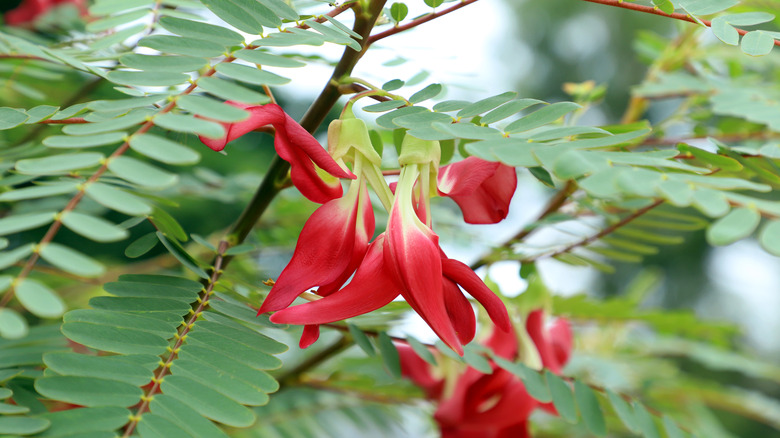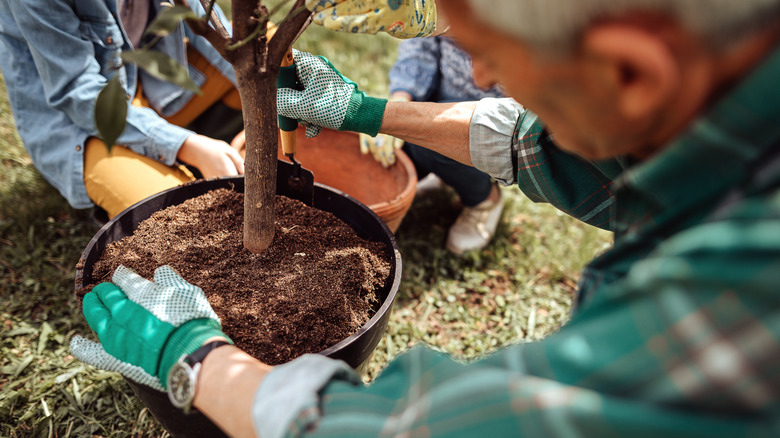Why You Should Reconsider Planting A Hummingbird Tree, Despite Its Beauty
The hummingbird tree is a beautifully tropical plant, and one look at its sculpted petals can make you want it in your garden. Scientifically known as Sesbania grandiflora, the hummingbird tree sprouts colorful flowers from white to red that attract various pollinators such as bees, and, as the name suggests, feathered pollinators such as hummingbirds. A tree that blooms beautiful, pollinator-attracting flowers is a win. However, there is a downside to this tropical plant: it can become invasive.
Invasive species are detrimental to the local ecosystem. They often spread quickly and compete with native plants for resources like water or nutrients. This not only affects the surrounding greenery but also the animals that depend on them. Although hummingbirds love this fast-growing tree, you might want to reconsider planting one in your yard for the sake of the surrounding flora. Or at the very least, don't plant hummingbird trees directly into the ground.
Hummingbird trees can be invasive
While planting Sesbania grandiflora can attract hummingbirds to your garden, it can also harm your local plant life. Outside its native area of Southeast Asia, the hummingbird tree has an extreme risk of becoming invasive. Since this species is fast-growing, very adaptable, and has high reproductive potential, it can beat out indigenous plants for the limited natural resources they need to grow. That means planting hummingbird trees can lead to their uncontrolled growth and a loss of your area's native wildlife.
Because of its invasive nature, the hummingbird tree is not recommended for cultivation by the University of Florida's Institute of Food and Agricultural Sciences. You do not want to give this tropical plant a chance to naturalize and destroy your native flora. However, there is one way to ornament your outdoor space with this tree and lower the risk of it becoming invasive. Don't plant in the ground and instead opt to plant in a container.
How to grow hummingbird trees without the invasive risk
To enjoy the hummingbird tree's beautiful flowers and the pollinators it attracts, you can grow the tropical plant in a pot. By doing so, the hummingbird tree won't compete with native plants for space, nutrients, water, or sunlight. The plant won't grow as tall as if it were rooted in the ground, but that shouldn't stop the hummingbirds from enjoying its red blossoms. You can style the trees in planters on the patio or along a walkway for a decorative touch to your outdoor space.
It is also possible to grow hummingbird trees in your garden beds, but you'll need to plant them in a container, too. Just grab a cheap plastic flower pot, cut the bottom off, and bury the container in your garden bed. Then, you can plant the hummingbird tree inside the plastic border. It is a clever way to keep the invasive plant from spreading in your garden, as its roots will only have the confines of the flower pot to take over. However, the safest bet to avoid a takeover by this invasive plant is to keep the hummingbird tree in an above-ground container or plant beautiful native flora instead.


